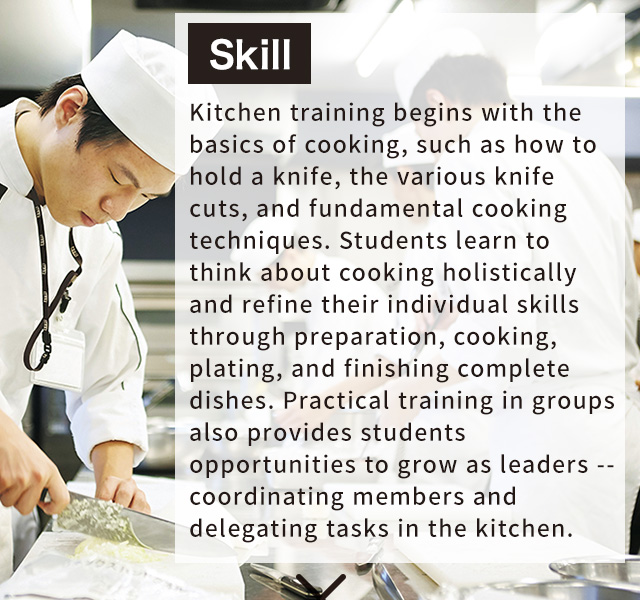
Here are some tips to help you become a better chef. The first tip is to always properly prepare the ingredients. Invest in good kitchen utensils. Also, be sure to read every step of the recipe carefully in order to avoid any burns. Always read the ingredient labels. By following these tips, you will have a well-prepared kitchen. Here are some cooking tips to help you get started. This will help you become a skilled cook.
Preparation before cooking
It can be very time-saving for novice chefs to prepare before they cook. Depending on the amount of time you have available to cook, it may make sense to limit your stovetop cooking to just one or two meals per day. You can also add non-cooking ingredients. After you have set up your kitchen, you can start cooking your first meal. This is usually the most time-consuming. This could be a soup, or an oven recipe. On the other hand, cold meals can be prepared while the rest is being cooked.
Proper kitchen equipment
You will need basic kitchen equipment, no matter if you are a home cook or a casual home chef. Basic cooking utensils are the most important. Because they are durable and easy to maintain, a nonstick pan is essential. A good nonstick pan is recommended for frying eggs. For many different tasks, a flat spoon made of wood is useful.

Avoiding burns
A kitchen can present a danger because of the possibility of getting burned. It is important to be cautious when handling hot pots or boiling waters to avoid being burned. Some burns are not serious and can be treated at your home. These incidents can often be avoided by following some simple guidelines. To ensure safety while cooking, follow these guidelines. You will be a better cook for it!
Read the entire recipe carefully
It doesn't matter if you are a professional chef or a novice cook, it is important to read the entire recipe. A good recipe should make the entire cooking process simple. You can have stress-free cooking by reading through the recipe. Here are some tips on how to read the recipe carefully. These are important tips for beginning chefs. It is important to read the instructions carefully so that you get the best results.
Avoid crowding the pan
There are several advantages to not overcrowd a pan when cooking. First, it will reduce the temperature of the pan. The food will not brown or release its moisture as quickly. Second, food that is too full of ingredients will be bland. To remove food from the pan easily, use a spoon. Avoid overcrowding your pan to ensure delicious and tender food every time.

Trust your instincts
Trust your gut instincts. This is especially true if they are coming directly from your gut. These instincts can be wrong. Your right brain is equipped with intuition, which can help you spot something or someone that is not familiar. But you need to balance the power of your intuition with your linear mind, which will weigh the options. Here are some methods to increase your gut instinct.
FAQ
What does it take to become a chef in the United States? What's the average career path for a chef?
A chef's career takes about five years. This time you'll learn the basics of cooking and work as a cook assistant. After your training is complete, you will be eligible to apply for a job as a sous chef, executive chef, or line cook. The annual average salary of a chef is $25,000-$60,000.
What are your basic cooking skills
Basic cooking skills include knowing how to read recipes, measure ingredients, cook food safely, and clean up after yourself. You need to master these skills if you want to cook for your own meals. Cooking is a great way save money as you don’t have to order take-out every day.
What equipment do I need to cook?
It doesn't take any special equipment or tools to learn to cook. The best tools will make cooking more enjoyable. You could, for example, use a spoon to make pasta or a whisk to whip the egg whites into stiff peaks. Having the right tools makes cooking less intimidating and allows you to start faster.
Statistics
- In the United States, the category is estimated at $23.2 billion annually and is growing faster than the market. (washingtonpost.com)
- under 10 Kids have been taught that there is special food just for them, and Fiese says that 10 percent of kids will throw a tantrum if they don't get the food they want. (washingtonpost.com)
- You'll be amazed that over 90% of CIA students receive scholarships and grants to finish their culinary studies. (ischoolconnect.com)
External Links
How To
How to make a perfect omelet
Omelets are one of my favorite foods to eat at breakfast. How do you make them perfect? I've tried many recipes and different methods but none have worked. I have some tips and tricks to help you make delicious, fluffy omelets every single morning.
First, eggs can be very temperamental ingredients for making omelets. The eggs must be fresh from an organic source and kept at room temperature until they are ready to be cooked. If you don't keep them cold enough, the whites won't form properly, and the yolks will break down too much and become runny. This will make your omelets appear strangely colored. If you want to make omelets right away, it's best not to use eggs that are too cold.
Another tip is to separate the egg before adding it to the pan. Because this could cause your omelet to become curdled, you don't want any yolk to be mixed with any white.
If you add the egg directly onto the stovetop, you might end up burning the bottom part of the egg, which would ruin the texture of your omelet. Instead, microwave the egg for 10 seconds before adding it to the pan. The microwave heat will cook the egg just right without making it too hot.
Next, let's discuss mixing the eggs. You want to mix the eggs thoroughly before you add them. Turn the bowl upside down and grab the whisk to do this. Next, shake the bowl vigorously. The egg will be thoroughly mixed in the bowl as the air is whipped.
Now comes the fun part: adding the milk to your mixture. Mix half of the milk with the eggs. Then fold the eggs in half into the remaining milk. Do not be alarmed if there are still egg streaks visible. Once the omelet flips, these streaks will disappear.
After folding the eggs fold the pan onto medium heat. When the oil starts to hot, wait for the pan to cook. Once the oil has gotten hot, add 1/4 cup of butter and swirl it around so that the entire pan is coated. Next, carefully open the lid and sprinkle salt into your pan. An additional pinch of salt will prevent the omelet form sticking to your pan.
Cover the pan once the omelet is formed and allow it to cool completely. Flip the omelet upside down or with a spatula. Cook the other half for another minute. Serve the omelet immediately by removing it from the pan.
This recipe works best with whole milk, but skimmed milk also works.